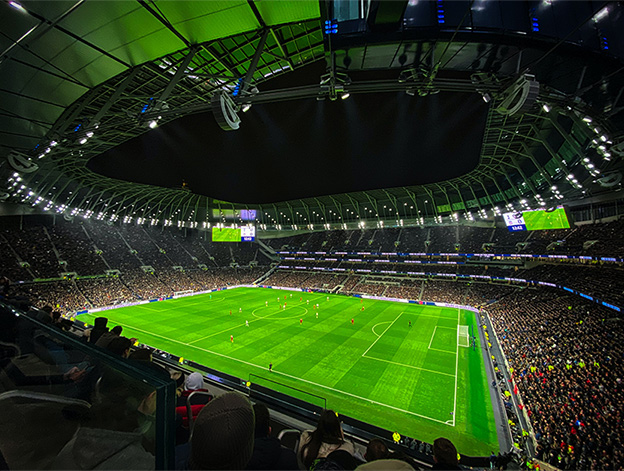Okay. So you have looked at the challenges involved in your recovery. You have now considered the most important questions such as cost, location and design. We now need to think about starting the work of recovery. That means building a good foundation. Once we are sure that this building is your design, it’s in the right location and you are aware of and are willing to pay the cost of it, you are ready to start building.
There are further questions regarding this connected to boundaries, materials and rooms. But we’ll get to them later. The first and most important aspects of your foundation are solidity and stability and now is the time to understand them and construct them properly. Let me define what we are going to look at in this message.
Solidity is defined as an ability of your foundation to carry the weight of the building. So when you build on it it does not crumble! Stability is defined as the ability of your foundation to withstand unusual conditions such as storms and flooding. How well your foundation supports the building when the wind blows!
The importance of a good foundation
Let’s first acknowledge the most important thing about a building, every building. It rests or stands and relies upon a good foundation. If the foundation is not strong enough, the wrong size or not solid enough, the building will not stand! It does not matter how well you build the rest of the house. It will not matter how good the balcony looks or how stylish the curtains are. The whole thing is going to come down. So here is principle number One
Your whole recovery is going to rely on your foundation.

Build well don’t limit your recovery!
Now, there are two ways to make your foundation strong enough to support your recovery. Either you must make a thorough and solid foundation, or you must limit the size of your recovery! I want you to recognise this and choose the first option! Ask yourself this question, “do I want an authentic recovery, or do I want a limited recovery”? Authentic recovery brings the possibility of growth, success and fulfilment, a recovery limited by a weak foundation cannot grow!
Picture a large concrete foundation badly built with a small tent in one corner and you get the picture! Don’t limit your growth!
Before we go on to the details of how to build a proper foundation we should first define what we mean by this, what would a good foundation look like? Let me tell you how I define this. When you have built a good foundation you will be able to say this;
Nothing anyone can do or say can make me use or act out
And of course the reverse is also true. Nothing anyone does or says can stop you from recovering! It is so important that you start to own this project. At the planning stage you were thinking about doing something.
At the foundation stage you are now making something! It is important that you now make it your own! It does not depend on others it depends on you. It is not owned by others it is owned by you. It is not maintained by others it is maintained by you. It is not designed by others it is designed by you! It’s yours!
That sense of ownership must now accompany you throughout the rest of your journey. Your foundation will be as good as your planning. Simply put your foundation is your abstinence, your clean self. It is on this abstinence that authentic recovery is built.

Abstinence is not recovery
So you can see from this that the foundation is hugely important! It is no small thing to achieve a good foundation! It is so great an achievement that there are some people that actually consider this foundation to be recovery! They would tell you that they have recovered because they have achieved this (usually accompanied by how long they have been ‘clean’), but I am defining it as only the beginning of an authentic recovery. If we stop there we have no house to live in, just something to stand on! I want to encourage you to build an authentic recovery. A recovery that includes the solid base to stand on, the house to live in and the possibility of growth towards the person you were always meant to be!
Let’s look at the challenge of constructing our foundation now and how it works. We will look at two big ideas, namely solidity and stability. We will also look at some of the peripheral issues of owning and building on our land, such as our boundary fence and our ‘gate’ or entrance/exit from our recovery.
Solidity – Where is your foundation weak?
Until we can say that ‘Nothing anyone can do or say can make me use or act out’ we are not ready to build anything on this foundation. It is the solidity question and it is always related to particular rooms (which you have named such as the ‘family’ room, career room etc.). We cannot build the ground floor until the foundation is completed and we cannot build the first floor until the ground floor is completed. I am risking repeating myself here but it is so important that you grasp the idea that there is simply no point in building further until you have a solid foundation. When using a metaphor like this these things are manifestly obvious but when applied to your ‘real life’ recovery the revelation can be shocking and powerful.
Stability – Building for the future
So how do we use this idea to reflect on our building? I want you to check out the definition of a completed foundation now. Relax and close your eyes once again. Picture your foundation. The concrete is poured the rooms have been defined by the foundation walls. Use your imagination now and allow yourself to walk around your foundation. Ask yourself honestly, is there anything anyone in this room could do or say that could convince me that using or acting out on my addiction would be a good idea? Is there anyone I meet in these rooms that has the power over me to make me use again? Is there anyone in these rooms that can hurt me enough to make me feel that I cannot cope with the pain? Is there anyone in these rooms that could remove their affection or themselves in a way that would have me using again?
I know that thinking about these things can be brutal and so I want to assure you that you do not need a perfect score at this point. It is not necessary for you to be invulnerable! But you must know where you are weak! Let me simplify this for you. Each time you realised that you are vulnerable to a certain person or a certain relationship it will have been in a particular room. So all we are saying is that you should not build on that part of the foundation yet.
As usual a case example will help to clarify.
Steve – A typical case example
Steve is nearly a year ‘clean’ and is attending one of my groups. He is at the foundation stage. He goes through the exercise and discovers that he has no weakness in the family room. He has no weakness in the relationship room. But wait! He walks into the workroom’ and bang! He meets a couple of characters that can have him ‘using’ in a heartbeat. They have done it before. Steve has had attempts at recovery in the past although he admits that they were just attempts to ‘clear his head’

These two characters have both played their part in getting him back on the ‘stuff’. The first character makes him feel terrible about himself. He bullies and ‘takes the mick’ (aways in the name of fun but aggression is often justified this way). The second character is another typical ‘friend’ in an addict’s life. This is the guy that ‘uses a lot but does not seem to get worse. He can get you anything and always wants to score and ‘go for a few’. Steve has not been able to say no to this character in the past.
So how do we proceed? Steve was advised not to build on this foundation. The other rooms are fine and we can progress to ‘first floor’ building but the work room is too shaky at the moment. In practice this means that it is not time for Steve to return to work yet (if he has a choice about that (in this case he did)). Steve was ‘signed off’ from work because of the addiction issues and this model helped him to understand and make sense of his journey, to construct it in a coherent way and to voice it in positive language. He could now choose not to build in this room. This brings in the function of ‘self determination’ (ref) which we will look at later.
How should Steve now proceed in this part of his foundation. He began some serious counselling work around his boundaries (ref) and his communication patterns (ref). Most of all he understood that his foundation was not completed and that solidity and stability must come before substantial building. Sometimes we will not have a choice about things like work and so in these situations I employ a principle that would certainly apply in something as difficult as building a house! The principle is this:
Difficulties are our best Teacher
As usual this can be easier to understand with an example I shall call Billy.
Billy – The sports professional
I have worked with many top professionals in sports, footballers and rugby players. As sports men and women it is easy for me to explain this idea using their experience of winning and losing. I asked Billy “which games do you learn the most from”? He answers without a pause “The ones we lose”! It’s very obvious isn’t it, but I continue to question because I want to establish the idea in Billy’s thinking. “Why is that, do you think”? “Because your weakness is exposed, you want to get better”. I could not have said it better myself.
Billy understands that you learn almost nothing from the games you win. But the games you lose can be the most instructive. As long as you are willing to learn from them.

What have you learned about building
the foundation of your recovery?
So we can start to see how we can use the things that hurt us to grow. In the past you have naturally avoided the very things that can help you the most! Let’s remind ourselves now about the main features to consider when building your foundation.
1 S0lidity – There is simply no point building a foundation that will give way as soon as you start to build on it! Do not be tempted to rush into building too fast. Everything you build from now on will depend on the quality of this foundation.
2 Stability – The foundation must be stable in order to offer a place where you can live permenantly. Conditions will change! It will not always be sunny and calm. Storms will come and test the stability of your foundation severely at times. Don’t just build for the good times!
3 Materials – Building materials are important. The quality of the building is not just about your efforts. You also need good quality materials. Things like honesty, humility, courage, resilience and discipline. Commitment and sacrifice. It is important to check the quality of the materials you are using. Skimping on the quality of your materials is the fastest way to produce an unstable foundation.
4 Design – A good foundation is not just a random slab of concrete! Your design is ‘built into’ your foundation. Check that all the rooms needed in your recovery are included in the structural walls of the foundation, Including rooms for your relationship, family, career, hobbies etc. Always remembering the room for the self! Designing the rooms of your recovery building will help you identify where any weaknesses in your foundation are.
Also included at this level are two important features, the garden (boundaries) and the gate/front door. The fence is used to look at boundaries and we remind participants that every boundary is particular to a relationship, and every boundary is movable. The gate and the fence represent ‘EXITS‘ in our metaphor and it is worth checking them out as part of your foundation building.




0 Comments